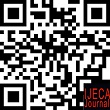Evaluation of Online English Learning Programs During the Covid 19 Pandemic Using the Cipp Model
Abstract
This study aims to determine: (1) the effectiveness of online English learning program implementation during the COVID-19 pandemic in terms of the context component (X1; (2) the effectiveness of online English learning program implementation during the COVID-19 pandemic in terms of the input component (X2); and (3) the effectiveness of online English learning program implementation during the COVID-19 pandemic in terms of the output component (X3). (4) the effectiveness of the online English learning program implementation during the COVID-19 pandemic from the product component; (5) the effectiveness of the implementation of online English learning programs during the COVID-19 pandemic in terms of the context (X1), inputs, processes, and product components; and (6) obstacles that impede the implementation of online English learning programs during the Covid-19. Data was gathered through the use of a questionnaire completed by 250 respondents. And the research sample consisted of 50 students chosen at random. after the data analysis results are transformed to a T-score and then enter the Glickman quadrant for evaluating the online English learning program's performance. The findings indicated that the CIPP score on the Glickman Quadrant (-+++) reflects a successful implementation of the online English learning program. They discovered a number of impediments to online English instruction, including the following: 1) Restrictions on media, network, or internet signals, as well as student internet quotas; and provision of customized internet quotas to assist students with specific learning requirements. 2) Student dissatisfaction with online education and a desire to meet in person on a permanent basis, comparable to the pre-pandemic era. 3) Due to the pandemic's prolonged presence, students' passion for studying has waned.
Keywords
Full Text:
DOWNLOAD [PDF]References
Al-Shanawani, H. (2019). Evaluation of Self-Learning Curriculum for Kindergarten Using Stufflebeam’s CIPP Model. SAGE Open, 9(1). https://doi.org/10.1177/2158244018822380
Aristovnik, A., Keržič, D., Ravšelj, D., Tomaževič, N., & Umek, L. (2020). Impacts of the COVID-19 pandemic on life of higher education students: A global perspective. Sustainability (Switzerland), 12(20), 1–34. https://doi.org/10.3390/su12208438
Divayana, D. G. H., Sanjaya, D. B., Marhaeni, A. A. I. N., & Sudirtha, I. G. (2017). CIPP evaluation model based on mobile phone in evaluating the use of blended learning platforms at vocational schools in bali. Journal of Theoretical and Applied Information Technology, 95(9), 1983–1995.
Hasanudin, C., Wagiran, & Subyantoro. (2021). Evaluasi Perkuliahan Daring Keterampilan Menulis Selama Masa Pandemi Covid-19 dengan Model Evaluasi CIPP. Jurnal Pendidikan Edutama (JPE), 8(2). https://doi.org/http://dx.doi.org/10.30734/jpe.v8i2.1784
Ismawati, D., & Prasetyo, I. (2020). Efektivitas Pembelajaran Menggunakan Video Zoom Cloud Meeting pada Anak Usia Dini Era Pandemi Covid-19. Jurnal Obsesi : Jurnal Pendidikan Anak Usia Dini, 5(1), 665. https://doi.org/10.31004/obsesi.v5i1.671
Lee, S. (2019). Evaluation of medical humanities course in college of medicine using the context, input, process, and product evaluation model. Journal of Korean Medical Science, 34(22). https://doi.org/10.3346/jkms.2019.34.e163
Lippe, M., & Carter, P. (2018). Using the CIPP Model to Assess Nursing Education Program Quality and Merit. Teaching and Learning in Nursing, 13(1), 9–13. https://doi.org/10.1016/j.teln.2017.09.008
Munthe, A. P. (2015). Pentingya Evaluasi Program di Institusi Pendidikan: Sebuah Pengantar, Pengertian, Tujuan dan Manfaat. Scholaria : Jurnal Pendidikan Dan Kebudayaan, 5(2), 1. https://doi.org/10.24246/j.scholaria.2015.v5.i2.p1-14
Mushfi, M. E. I. B., & Musrifah. (2020). The Problems of Application of Online Learning in the Affective and Psychomotor Domains During the Covid-19 Pandemic. Jurnal Pendidikan Agama Islam, 17(2), 137–154. https://doi.org/https://doi.org/10.14421/jpai.2020.172-03
Mustangin, M., & Riswanto, B. (2020). The Challenges and Opportunities ; CIPP Model for Evaluation for TEFL Following the COVID-19 Pandemic. Jurnal Teknologi Dan Bisnis, 2(1), 29–39. https://doi.org/https://doi.org/10.37087/jtb.v2i1.12
Neyazi, N. (2016). Evaluation of selected faculties at Tehran University of Medical Sciences using CIPP model in students and graduates point of view. Evaluation and Program Planning, 59, 88–93. https://doi.org/10.1016/j.evalprogplan.2016.06.013
Pater, I. M., Yudana, I. M., & Natajaya, N. (2020). Studi Evaluasi Implementasi Sistem Penjaminan Mutu Internal (SPMI) dalam Rangka Mewujudkan Budaya Mutu. Jurnal Pedagogi Dan Pembelajaran, 3(1), 95. https://doi.org/10.23887/jp2.v3i1.24364
Putra, I. G. G., Marhaeni, A. A. I. N., & Dantes, N. (2015). Studi Evaluasi Pelaksanaan Kegiatan Ekapaysmainstructor Academy ( EIA ) dalam Rangkapengembangan Diri dan Karakter Bangsa. E- Journal Program Pascasarjana Universitas Pendidikan Ganesha, 5(1), 1–11. https://doi.org/https://doi.org/10.23887/jpepi.v5i1.1558
Ragil, Y. A., Meilani, S. M., & Akbar, Z. (2020). Evaluasi Sistem Penjaminan Mutu Internal Program Studi S1 Pendidikan Guru Pendidikan Anak Usia Dini. Jurnal Obsesi : Jurnal Pendidikan Anak Usia Dini, 4(2), 567. https://doi.org/10.31004/obsesi.v4i2.420
Sadikin, A., & Hamidah, A. (2020). Pembelajaran Daring di Tengah Wabah Covid-19 ( Online Learning in the Middle of the Covid-19 Pandemic ). BIODIK: Jurnal Ilmiah Pendidikan Biologi, 6(02), 214–224. https://doi.org/https://doi.org/10.22437/bio.v6i2.9759
Singhal, T. (2020). A Review of Coronavirus Disease-2019 (COVID-19). In Indian Journal of Pediatrics (Vol. 87, Issue 4, pp. 281–286). https://doi.org/10.1007/s12098-020-03263-6
Stufflebeam, D. L., & Coryn, C. L. S. (2014). Evaluation: Theory, Models, & Application (Second Edition). San Fransisco: Jossey-Bass.
Sugiyono. (2013). Metodelogi Penelitian Kuantitatif, Kualitatif Dan R&D. Bandung:Alfabeta.
Suharjito, S., & Halim, M. (2015). Learning Management System Development With Application of Asynchronous Learning Method in STMIK IBBI Medan. CommIT (Communication and Information Technology) Journal, 9(2), 83. https://doi.org/10.21512/commit.v9i2.936
Sukardi. (2009). Evaluasi pendidikan. Medan, Indonesia:PT Bumi Aksara.
Suryadi, & Erlangga, F. (2021). Evaluation of the Implementation of the Internal Quality Assurance System At Stkip Situs Banten Using the Cipp Evaluation Model. International Journal of Education and Curriculum Application (IJECA), 4(3), 256–263. https://doi.org/https://doi.org/10.31764/ijeca.v4i3.5793
Toosi, M., Modarres, M., Amini, M., & Geranmayeh, M. (2021). Context, Input, Process, and Product Evaluation Model in medical education: A systematic review. A Systematic Review. In Journal of Education and Health Promotion, 10(1). https://doi.org/10.4103/jehp.jehp_1115_20
Zaenudin. (2011). Metodologi Penelitian Kefarmasian dan Kesehatan. Surabaya: Airlangga University Press.
Zu, Z. Y. (2020). Coronavirus Disease 2019 (COVID-19): A Perspective from China. In Radiology (Vol. 296, Issue 2). https://doi.org/10.1148/radiol.2020200490
DOI: https://doi.org/10.31764/ijeca.v5i1.7842
Refbacks
- There are currently no refbacks.
Copyright (c) 2022 Herli Salim, Suryadi

This work is licensed under a Creative Commons Attribution-ShareAlike 4.0 International License.
IJECA (International Journal of Education and Curriculum Application) already indexed:










___________________________________________________________________
| |
____________________________________________________________________
IJECA Publisher Office:







.jpg)




